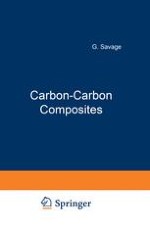1993 | Buch
Über dieses Buch
Carbon fibre reinforced carbon composites form a very specialized group of materials. They may be considered as a development of the family of carbon fibre reinforced polymer composites which are becoming ever more prevalent in modern engineering. Since the early 1960s a large number of so-called 'advanced materials' have appeared on the scene. Carbon~arbon is arguably the most successful of all these products finding many and varied applications. In the field of Formula 1 motor racing for example, the present levels of performance simply could not be achieved without the use of carbon-carbon brakes and clutches. Despite the materials' obvious assets, they have not, and will not, reach their full potential until their inherent problems of excessive production costs and oxidation resistance have been addressed properly. In this respect the 'carbon-carbon story', of much potential but only limited success, serves as a lesson to all those involved in materials research, development and application. In writing this book I have tried to set up a logical progression of what the materials are, how they are made, what their assets and deficiencies are, what they are used for and to what extent they are commercially exploited. Each specialized chapter may be considered in isolation or as part of a sequence, whereas the final chapter provides a summary of the principal concepts as well as a basic review of the economic situation past, present and, hopefully, future.
Anzeige
